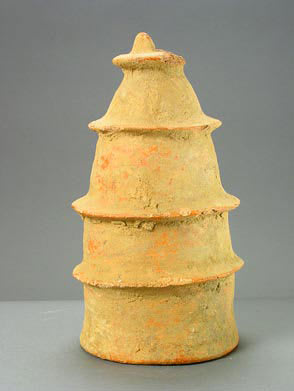Inland Niger Delta Terracotta Conical Sculpture, 12th Century CE - 14th Century CE
Terracotta
5.5 x 10.25
PF.3293
This marvelous terracotta sculpture was created by skillful artisans in the West Republic of Mali. Around the time of its creation the Mali Empire was at its zenith, for by...
This marvelous terracotta sculpture was created by skillful artisans in the West Republic of Mali. Around the time of its creation the Mali Empire was at its zenith, for by the end of the 12th century the legendary king Sundjiata had greatly enlarged both the wealth and size of his territory. Created in such prosperous and glorious period, the bell-shaped sculpture displays elegance and grace through its simple, minimal sculptural quality. Although the sculpture is in the shape of a bell, it most likely had other important functions in the royal quarter of ancient Mali. Supported by the wide circular bottom, a small concave structure is placed on the narrower top portion of the sculpture. Moreover, ribbed pattern lines encircle the body to enhance the simple grace and aesthetics of the form. Such beautiful work of art perhaps was used as a base of a royal seat or a bed. Perhaps it was used as a cover for burning incense which filled the royal court with its aroma. Or perhaps it was a lid for various offerings such as food and symbolic materials in rituals. Although we do not know the sculpture's function for certain, we undoubtedly can see and feel the royal beauty of the sculpture which would be appreciated through out the ages to come.



